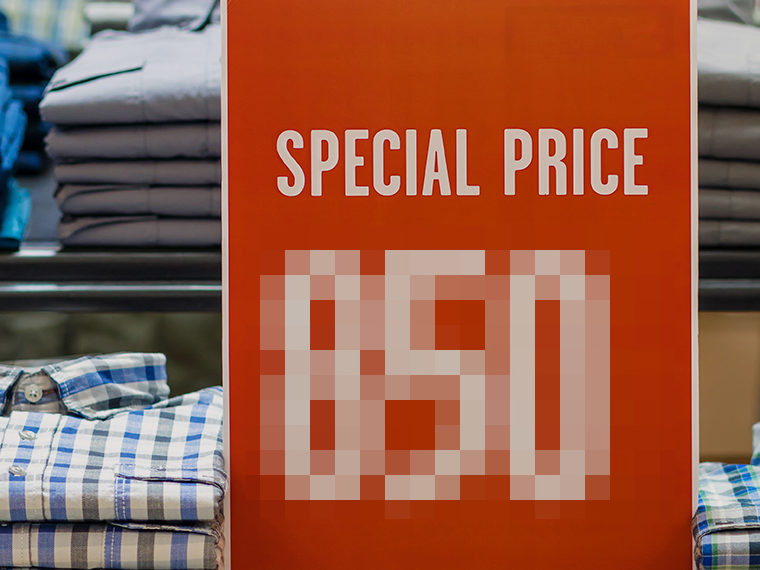Consumer goods got costlier as manufacturers moved to avoid new revenue recognition rules
An accounting rule change meant to better match revenue and promotional costs at manufacturers selling to the retail industry has led to higher prices on millions of consumer goods, from face creams and potato chips to pet supplies and appliances, according to a working paper by UCLA Anderson’s Zitong Zeng, a Ph.D. student. The rule, Accounting Standards Codification 606, appears, due to its complexity, to discourage certain contracts between manufacturers and retailers that incentivize stores to keep prices low, Zeng’s research suggests.
Implemented in stages beginning in 2018, ASC 606 changed the timing of revenue recognition on contracts with variable terms between businesses and their clients. Among those affected are popular agreements in which retailers earn discounts on products if they hit sales targets set by manufacturers. The rule also applies to deals where manufacturers effectively pay retailers to run sales of their products.
One of the basic tenets of accounting is that revenue — and costs of producing that revenue — ought to be recognized in the same period, giving management, investors, lenders and regulators a clear picture of a firm’s operating profitability. ASC 606 tightens up alignment of revenue and cost reporting. (Promotional costs aren’t technically accounted for as costs in a company’s income statement, but rather as reduced, or contra, revenue.)
Opt In to the Review Monthly Email Update.
Manufacturers strategically shifted away from these discount offers, officially known as variable consideration trade promotions, when ASC 606 went into effect for their companies, Zeng’s research suggests. Under the previous regime, ASC 605, as seen below, companies could book revenue in one quarter and not recognize the revenue reduction, akin to a cost, from promotions or discounts until the next, depending on the timing of such arrangements. A $10,000 sale, Zeng points out in an email exchange, could be booked in one quarter, while the $800 discount owed the retailer for hitting a sales target wouldn’t be booked until the next period.
Now under 606, companies have to estimate their eventual revenue reductions from promotions and book those adjustments at the same time as the related revenue, and then make adjustments as actual results come in.
More Fixed Promotions, Lower Sales Volume
With the change, manufacturers have offered retailers more fixed promotions, Zeng reports. These typically involve upfront payments for things such as optimal shelf space or special displays in the stores. Because the payments are not dependent on sales, they do not motivate retailers to discount prices of the goods.
Zeng analyzed prices and sales volumes for 3 million unique products sold in 30,000 to 50,000 stores. The dataset, from NielsenIQ, covers almost all types of consumer goods sold from a wide variety of retailers, including grocery stores, mass merchandisers and drug stores. The food and beverage transactions in the dataset represent about 30% of all those sales in the U.S., she writes.
Consumer prices, she observes, rose an average 4.4% when ASC 606 went into effect for the manufacturers. The result came from comparisons of store prices on products from manufacturers who were required to adopt ASC 606 in early 2018 to prices from those that adopted it up to a year later. (Adoption date requirements were determined by each company’s fiscal year.)
The data allowed Zeng to compare prices within product categories, locations and time periods, which helped isolate the effects of the rule from other possible contributing factors, she writes. For example, she isolates coffee prices and sales across stores in Tennessee in one financial quarter. Those stores likely were affected in the same way by variables like coffee commodity prices, seasonal sales promotions and inflation.
Liquor sales also were key to understanding the forces behind the price increases, as promotions in the industry have long been banned by law. Alcohol prices didn’t change after ASC 606 went into effect, Zeng shows.
Zeng suggests manufacturers reduced reliance on sales-dependent contracts to avoid having to estimate how much discount each retailer might earn, and then record each of those guesses as hits to revenue. She notes that these ASC 606 requirements make a once quick reporting process much more time consuming and expensive for the sellers, in addition to requiring earlier recognition of revenue adjustments.
Did Manufacturers Take a Financial Hit Over ASC 606?
The new rule requires the supplier to estimate, at the beginning of a contract, the dollar value of discounts, rebates or promotional payments that it expects its customer to earn. This value is reported as contra revenue, a figure to be subtracted from total earned revenue. The manufacturer is expected to continually amend this estimate, based on its updated expectations of the retailer’s ability to hit the discount targets, until the contract ends with real sales figures.
Although the shifts to fixed promotions appear to have raised consumer prices and slightly reduced the volume of sales, they had little overall effect on manufacturers’ financial performance, according to the study. The findings show no statistically significant changes in key metrics such as revenue growth, gross margin and operating cash flows for affected manufacturers.
ASC 606 was implemented mainly at regulators’ requests, largely to standardize revenue recognition across industries. Prior to implementation, companies followed industry-specific rules, which varied in ways that made comparing financial statements widely and auditing them consistently difficult. The standard also significantly increased disclosure requirements, including fine details in revenue reporting and expanded qualitative information about judgments and estimates, aimed at providing greater transparency to investors and analysts.
Featured Faculty
About the Research
Zeng, Z. (2025). From FASB to Retail Shelves: ACS 606, Promotions and Prices.






